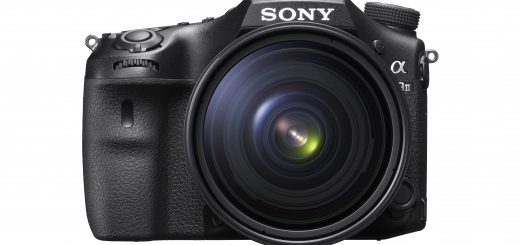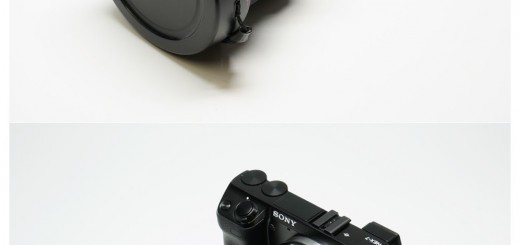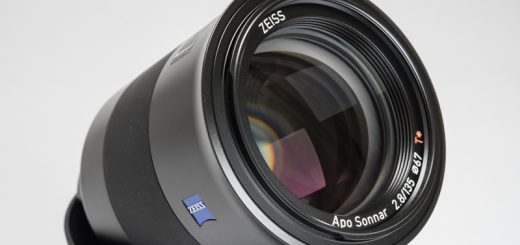Sony SEL 1018 f4 OSS vs SEL 16 f2.8 Rolling Review, Part II
There is obviously one big advantage of SEL 16 f2.8 and that is the size. I am not saying weight, because SEL 1018 f4 OSS is so light, than in a real life, it doesn’t make any difference comparing them.
Size advantage is significant, and if that matters to you, SEL 16 f2.8 is probably the smallest lens that you can mount on NEX. This combination results in a system, that can fit in most jacket pockets.
Mounting VCL-ECU1or VCL-ECF1 on SEL 16 f2.8 significantly close the size gap, but any of those two combination will still remain smaller, than a plain SEL 1018.
VCL-ECF1 is another reason to consider keeping SEL 16 f2.8, if you like fish-eye effect.
There were plenty of discussions about QC and sample variations of SEL 16 f2.8. I can’t comment on those (having only 1 sample), but mine certainly suffer from corner smearing.Mounting VCL-ECU1 further decrease corner quality, while surprisingly VCL-ECF1 seems to improve it. (I will show that later.)
But let’s see how both lenses performs against each other.
For the following test I selected a structured wall from a close distance (approx. 50 cm). As always, NEX 7 was on a tripod, remote controller or shutter delay (2s) were used, in this test I used MF instead of a single spot AF (that was maybe a mistake, considering small distance from the subject), files were developed in LR 4.2 with a standard sharpening (amount 25, radius 1, detail 25) and noise reduction (Luminance 0, Color 25, Detail 50).
Files were than opened in PS CS5 and composed for the final output, without further adjustments.
Test scene 1 (Notice magenta cast on 10mm, despite f11)
 |
| Sony NEX 7 + SEL 1018 f4 OSS at 10mm and f11 – Test scene, daylight, shade |
Here are the results at 16mm and f4
(Please note, that the slight difference in framing is caused by different size of the lenses. In a proper test, I should move the tripod closer with a SEL 16 f2.8, but in a field, trying to keep lighting condition as similar as possible, I decided not to. I don’t think that this will make any significant difference in a lens performance, but you should be aware of it.)
 |
| Sony NEX 7 + SEL 1018 f4 OSS (left) and SEL 16 f2.8 (right) at 16mm and f4 |
You should click on the image to open original size to see the differences. In my opinion, SEL16 f2.8 holds very well against SEL 1018, being actually sharper in the corners, but failing in the extreme corners due to the smearing. SEL 1018 holds well, with visible softer corners than a center, but this is to be expected for such a lens wide open.
Here are results at f11
 |
| Sony NEX 7 + SEL 1018 f4 OSS (left) and SEL 16 f2.8 (right) at 16mm and f11 |
The difference here is much more obvious. SEL 1018 corners are significantly improved by stopping the lens down to f11, while SEL 16 f2.8 improves too, but the extreme corners are still very bad.
Enough with the walls (well almost), as I do not expect many users to use any of those two lenses at such short distance, wide open, with a flat field subject and expect super crisp corners. Let’s see how will they perform at larger distance (approx. 7m) from the… well wall again, but this time there are some windows at least 🙂
Test scene 2
 |
| Sony NEX 7 + SEL 1018 f4 OSS at 16mm and f8 – Test scene, daylight, shade |
Here are results at f4
 |
| Sony NEX 7 + SEL 1018 f4 OSS (left) and SEL 16 f2.8 (right) at 16mm and f4 |
In a more likely shooting scenario than closeups of the wall, corner smearing on SEL 16 f2.8 are making all the difference. While center sharpness is excellent from wide open, even slightly better than SEL 1018, extreme corners are nothing short of disaster. There is nothing one can do with this, except to crop the image. Resolution of NEX 7 can easily allow that, but for any serious work it is rather difficult to guess the composition in advance.
SEL 1018 on the other hand, deliver very good sharpness across the frame. I was pleasantly surprised. There is plenty of CA, more than on SEL 16 f2.8 (maybe because it is already stopped down at f4), but that is easily correctable in LR.
Let’s see if stopping down will help.
Here are results at f8
 |
| Sony NEX 7 + SEL 1018 f4 OSS (left) and SEL 16 f2.8 (right) at 16mm and f8 |
Well, it certainly does help. But there is no doubt, that SEL 1018 is still much better in the extreme corners. In the center, both lenses are excellent. (Remember, there is only standard sharpening applied)
In most situations our subjects are not flat fields. So stying at the same location, let’s change the angle to get some perspective.
Test scene 3
 |
| Sony NEX 7 + SEL 1018 f4 OSS at 16mm and f8 – Test scene, daylight, shade |
Here are results at f5.6
 |
| Sony NEX 7 + SEL 1018 f4 OSS (left) and SEL 16 f2.8 (right) at 16mm and f5.6 |
This is very obvious scenario in which the part of the scene, close to your tripod or legs ends in a frame. In this test, SEL 1018 performs incredibly well, showing almost sharp extreme corners, unlike SEL 16 f2.8 that suffers as in all tested scenarios from a corner smearing. In this case, effect is even more pronounced and not linked only to extreme corners, at least at the bottom part.
Some people says, that mounting VCL-ECU1 actually improve corner performance of SEL 16 f2.8. Well, this is not the case with my sample, but there is no reason not to believe them, however, I would like to see original RAW files that confirms so. My combination with this ultra wide extension is simply awful. Here is the test from the previous scene that makes it clear for me.
SEL 10-18 f4 OSS at 11mm and f8 vs SEL 16 f2.8 with VCL-ECU1 mounted (approx. 12mm) at f8
 |
| Sony NEX 7 + SEL 1018 f4 OSS (left) and SEL 16 f2.8 + VCL-ECU1 (right) at 12mm and f8 |
As mentioned above, there is also VCL-ECF1 – fish-eye adapter for SEL 16 f2.8. This extension gives you the effect that SEL 1018 can’t. Here is the difference in a filed of view, compared with a SEL 1018 at 10mm.
Sony SEL 1018 at 10mm and f8
 |
| Sony NEX 7 + SEL 1018 f4 OSS at 10mm and f8 – Test scene, daylight, shade |
and SEL 16 f2.8 with VCL-ECF1 fish-eye also at f8, where I added 100% crops of the corners and the center.
 |
| Sony NEX 7 + SEL 16 f2.8 + VCL-ECF1 at f8 |
There are lot of CA, but nothing that LR 4.2 will not remove with a simple click. As mentioned, corners , especially in the bottom part are IMO improved in comparison with the plain SEL 16 f2.8.
Let me summarize my findings and thoughts. YMMV.
- Regarding image quality, I have no doubts, SEL 1018 is a better lens than SEL 16 f2.8, at least when it comes to the sharpness across the frame.
- SEL 1018 has also slightly better micro contrast and warmer color rendition. It also has more CA however. Overall, SEL 1018 seems to be outstanding lens (I will show you in the next blog short comparisons to Sigma 19 f2.8 E and Nikkor 14-24 f2.8 G AF-S), with the only problem of magenta cast, that with the use in a field become less and less relevant.
- Build quality is similar for both, at least as far as I can judge. SEL 1018 comes with a lens hood though. (And if that matters to some, it is black and goes well with NEX 7, and 6, unlike silver SEL 16).
- SEL 1018 is much more versatile (it’s a zoom), and can cover wider FOV (unless you want a fish eye effect).
- My sample of either SEL 16mm f2.8, VCL-ECU1 or both is bad. This combination is for me useless. On contrary, I am very pleased with a VCL-ECF1 mounted on SEL 16 f2.8I mentioned in the introduction, one main benefit of SEL 16 f2.8 over SEL 1018 being the size, but there are at least two more, that for some, could be even bigger.
- Speed. Being 1 stop faster than SEL 1018, SEL 16 can be nice lens to use on parties, events, night and street snaps etc. where corner sharpness is not that important (due to the shallow DOF). This in combination with a size, is certainly important to consider. On the other hand, SEL 1018 comes with the OSS, which can be useful for travel and indoor photography where the subjects are static.
- Price. For the half of the price of SEL 1018 it is possible to buy (with a little search) SEL 16 + both extenders.
So, as usual, it is not B&W when it comes to the conclusion. For me however (for landscape and cityscape), there is little reason to keep SEL 16mm f2.8.
But for many others, it can be a better choice.
Here are the links to the other parts of the review.
Part I – Initial Impression:
http://www.verybiglobo.com/?p=61
Part III – SEL 1018 vs Sigma f2.8 EX DN:
http://www.verybiglobo.com/?p=59
Part IV – SEL 1018 vs Nikkor 14-24 G AF-S
http://www.verybiglobo.com/?p=58
Part V – SEL 1018 f4 OSS – Final Word
http://www.verybiglobo.com/?p=56
Thanks for reading and let me know what is your opinion.





















Thx for doing the tests. Just my 2 cents, ideal test would be – to compare both at 12mm and 16mm. Since those are the only two the SEL16f28 is capable of combined with the converter.
Thanks for reading. I already included one comparison at 12mm with crops above, but I didn’t bother to make complete comparison, because what I saw as a result with UWA converter, did indicate what should be expected in general.
I already sold my SEL 1628 and converters.
Thanks for the awesome review! I have been looking for such a review for a while and am so happy I came across your review. With all of your photos and your detailed comments I was able to finally SEE the difference! That’s exactly what I was looking for.
I appreciate all the work you put into your review and thanks again for helping me to decide on the 10 to 18.
THanks,
Deborah Miller
Thanks Deborah,
It’s great if our review helped you to make more informed decision. Enjoy this little but very good UWA zoom.
Cheers,
Viktor
You forgot to add that with the 10-18mm you can add a filter or a protection for the lens.
I still dont know if I should buy this lens… the 16mm+wide angle adapter is not that bad after all when you see the price of the 10-18mm.
Hi mat,
good point about filters, thanks. IMHO, 16/2.8 is good in the mid frame, but you’ll hardly get sharp extreme corners at any aperture. It all depends what you need it for.
Cheers,
Viktor
Thanks for the tests. For the longest time, Ive been thinking of getting the 10-18, but since I don’t make any money off of my photos, for me sel16f28 is enough and a great value. I rarely care about extreme corner sharpness for my landscapes or even people shots. Most times I add a vignette to draw attention to the center, so few hundred dollars for corner sharpness isn’t worth it for me.
What is worth though (if the lens can be had at discount or used) , is the wider angle at 10mm and the flexibility due to the zoom range.
I actually love the sel1650, if only sony made the adapters fit this kit lens, it would have been an awesome solution. 1 kit lens, with a wide angle or fish eye adapter is a very flexible solution.
Don’t know if you mentioned this, just saw the size comparisson picture on Google.
Well the advantage would be that the if user is not going to constantly use the Wide-adapter and think the 16 is fine for a walk around lens, the size flexibility is an advantage when it comes to taking the camera with. Even if the user would constantly bring the adapter with, beeing able to divide them makes them so much easier to pack, if the user does not carry a camera bag. Well actually if user intends to always use the wide adapter, I guess it would be less fiddely to attach the adapter than attaching a lens to the body, so they would still be easier to pack in a bag compared to separating house and lens, for easier packing.
But if the size is fine, and you have the money the zoom seems better. Most of the time the sharpness would make up for the Aperature advantage, even if it using Optical stabilization is out of the question, or if they would be added to a newer camera with in house stabilization (starting with the a6500).